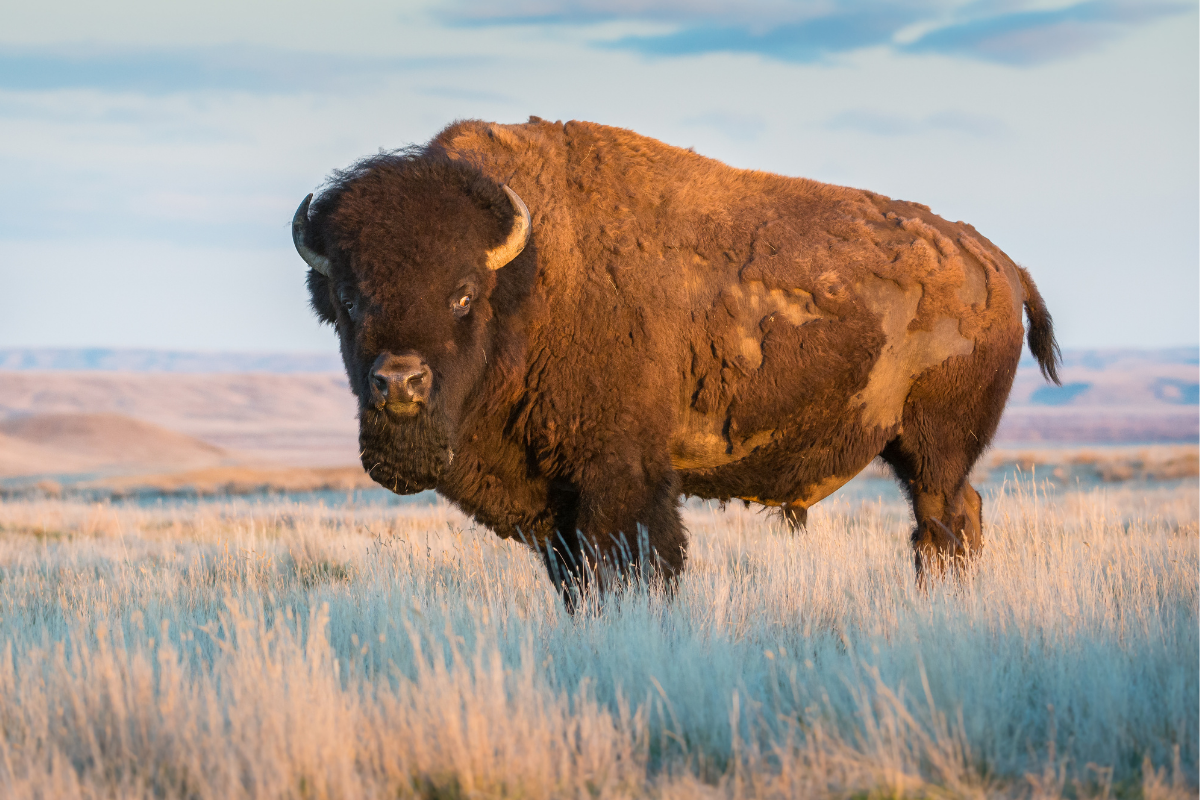U.S. District Court Judge Randolph D. Moss ruled Jan. 12 that the U.S. Fish and Wildlife Service once again violated the law when it dismissed scientific evidence that Yellowstone bison may warrant protection under the Endangered Species Act, requiring the agency to take another look at the listing request.
This is the second successful lawsuit brought by Buffalo Field Campaign, Friends of Animals and Western Watersheds Project to advance ESA protection for the distinct population segment of Yellowstone bison. As our national mammal moves back into the queue for full and fair consideration under the ESA, up to 900 of the animals are slated to be slaughtered this winter.
“FWS has continued to disregard credible, scientific evidence showing that the current management and slaughter of bison is putting the population at risk,” said Jennifer Best, director of Friends of Animals’ Wildlife Law Program. “This ruling demands more accountability from FWS and paves the way for preventing wild bison from going extinct.”
State and federal agencies have been shooting bison in and around Yellowstone National Park since 2000 as part of the Interagency Bison Management Plan, which is heavily influenced by Montana livestock interests.
“For the last eight years we’ve sought to hold FWS accountable for its failure to protect wild Yellowstone bison,” said James Holt, Buffalo Field Campaign’s Executive Director. “While we savor this victory today, time is not on our side.”
Only 5,400 Yellowstone bison exist today. Nearly 3,500 have been slaughtered just in the last five years to cater to unfounded fears of transmission risk to local livestock operations of brucellosis, a non-native disease introduced to the region by livestock. However, a study by the National Academy of Sciences found that of all the instances of brucellosis transmission from wildlife to domestic cattle, not one single incident was attributable to bison.
The wild bison of the Yellowstone ecosystem make up the world’s most important bison population in existence. They are the last continuously wild, migratory bison to exist on their native range since prehistoric times.
“This is another important victory for Yellowstone bison. But it is important that this victory lead the U.S. Fish and Wildlife Service to ensure adequate protections for our national mammal,” said Jocelyn Leroux, Montana director for Western Watersheds Project. “Yellowstone bison, and the Central Herd specifically, need action now to reverse decades of aggressive government killing and harassment.”
FWS continues to ignore scientific evidence that there are two separate and genetically distinct herds of bison—the Central Interior Herd and Northern Herd—in Yellowstone National Park. The current Interagency plan treats bison as a single herd, failing to provide safeguards to maintain both herds as distinct and isolated units. The Central Interior Herd may already be too small to maintain its viability from a genetic standpoint.
Darien, Conn.-based Friends of Animals, an international animal protection organization founded in 1957, advocates for the rights of animals, free-living and domestic around the world. www.friendsofanimals.org.
West Yellowstone, Mont.-based Buffalo Field Campaign is a non-profit public interest organization founded in 1997 to protect the natural habitat of wild migratory buffalo and native wildlife, stop the slaughter of America’s last wild buffalo and advocate for their lasting protection, and work with people of all nations to honor the sacredness of wild bison. www.buffalofieldcampaign.org.
Hailey, Idaho-based Western Watersheds Project is a nonprofit environmental conservation group dedicated to protecting and restoring wildlife and watersheds throughout the American West that works to influence and improve public lands management with a primary focus on the negative impacts of livestock grazing on 250 million acres of western public lands. www.westernwatersheds.org.

